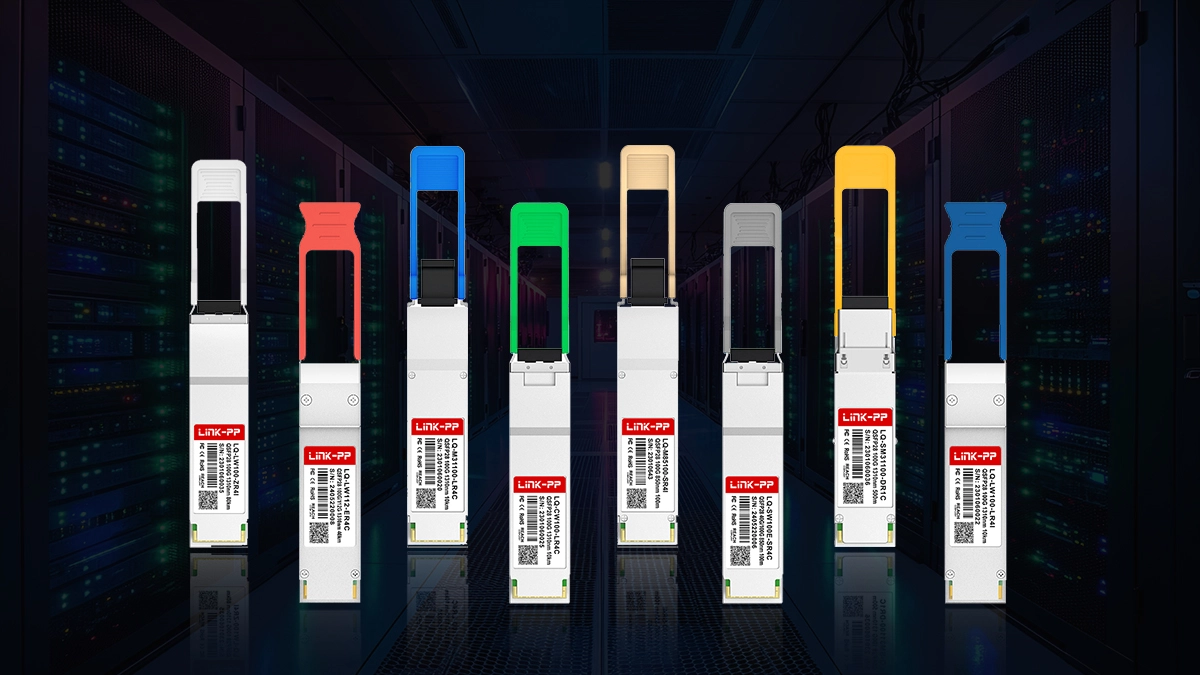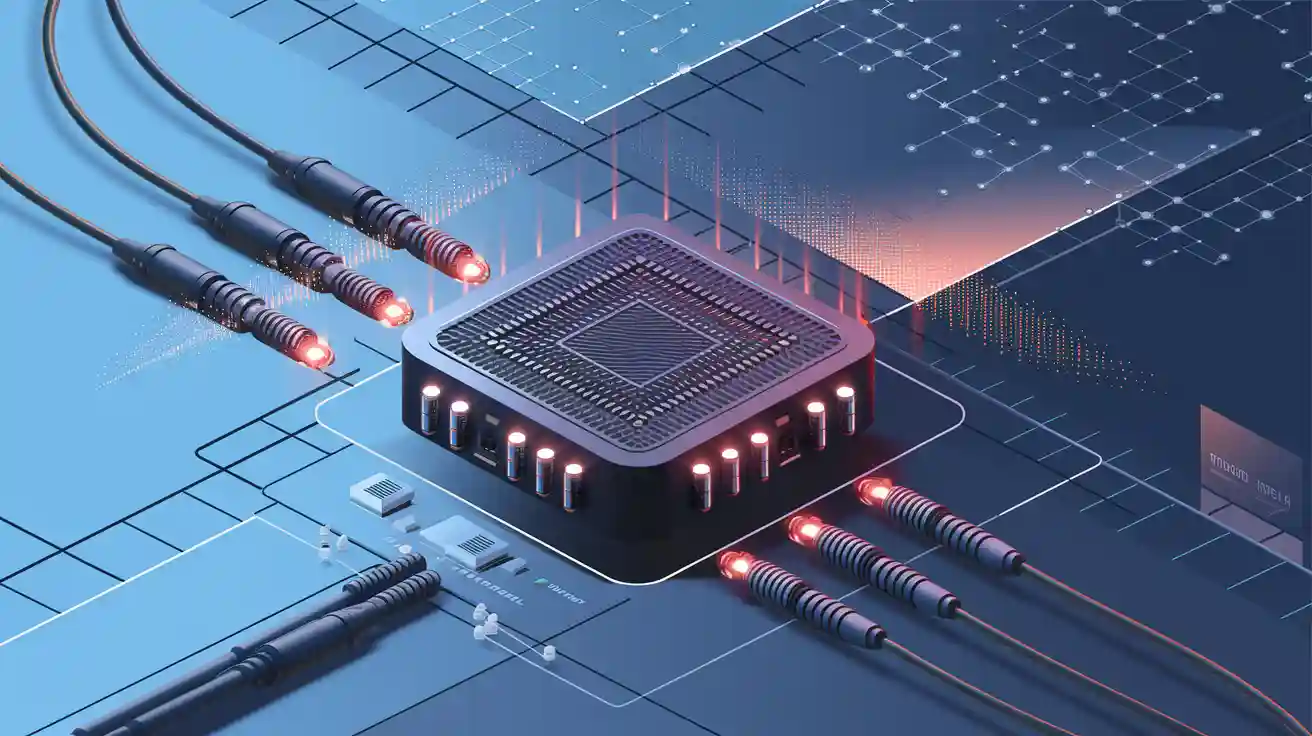
In today's fast-moving digital world, the Optical Transceiver Module plays a crucial role. It converts electrical signals into light signals and back again, facilitating rapid data transmission through fiber optic cables. As IoT and AI continue to expand, the need for faster optical transceivers becomes even more critical. LINK-PP Optics Transceivers are recognized for their reliable performance in modern networks.
Understanding Optical Transceiver Modules
What Is an Optical Transceiver Module?
An optical module is a small device for communication. It can send and receive data at the same time. This helps send data quickly through fiber optic cables. It ensures fast and reliable communication.
Optical transceivers are efficient in changing signals. These modules have many parts, each with a specific functions:
Component | Functions |
|---|---|
Electrical input interface | Takes in electrical signals to change them. |
Array of laser drivers | Powers lasers or LEDs to send light signals. |
Array of light emitters | Changes electrical signals into light signals. |
Optical multiplexer | Combines many light signals into one for sending. |
Optical output connector | Sends the light signal into the fiber-optic cable. |
Optical input connector | Takes in light signals from the fiber-optic cable. |
Optical de-multiplexer | Splits combined light signals into separate ones. |
Array of light detectors | Changes light signals back into electrical signals. |
Array of trans-impedance amplifiers (TIA) | Makes the electrical signals stronger after detection. |
Electrical output interface | Sends out the final electrical signal. |
These parts work together to send data smoothly. This makes optical transceivers very important for modern networks.
Why Are Optical Transceivers Important?
Optical transceivers are needed for faster communication and more data. They are key to 5G networks, data centers, and cloud systems.
Here’s why optical transceivers matter:
The market for optical transceivers may grow from $12.62 billion in 2024 to $42.52 billion by 2032.
5G networks need transceivers for faster and low-delay connections.
Companies are making advanced transceivers like 100G QSFP28 modules for new uses.
Better fiber optic tech and global data needs make these modules more important.
Optical transceivers help make communication faster and better. They are shaping the future of technology.
Applications of Optical Transceivers in Communication

Data Centers and Cloud Computing
Optical transceivers are important for fast communication in data centers. They connect servers and devices for tasks like video streaming and cloud computing. These modules help send data quickly with little delay, which is needed for real-time tasks.
Here’s how they help data centers and cloud systems:
Benefit | Description |
|---|---|
High-speed data transmission | Needed for tasks like cloud computing and video streaming. |
Long-distance communication | Sends data far with little signal loss, great for long distances. |
Low latency | Ensures quick communication for real-time data transfer. |
Enhanced bandwidth | Uses methods like Wavelength Division Multiplexing for more data. |
Energy efficiency | Saves energy by sending more data with fewer devices. |
Using optical transceivers helps meet the need for faster data transfer. They also save energy and reduce the number of devices needed. This supports eco-friendly goals in data centers.
Telecommunications Infrastructure
Telecom networks depend on optical transceivers for strong and fast communication. These devices send data far using fiber optics with little signal loss.
Studies show that basic optical transceivers can improve network reliability. They use polarization sensing to find traffic issues and fix them. They also support seismic monitoring with acoustic sensing. These features make optical transceivers vital for modern telecom systems.
Enterprise Network Solutions
In business networks, optical transceivers allow fast and scalable communication. They support different data speeds, making it easy to grow networks as businesses expand.
Here are key benefits of optical transceivers in business networks:
Benefit | Description |
|---|---|
High Data Rate | SFP-DD transceivers handle 100G Ethernet for busy networks. |
Increased Port Density | Dual lanes in SFP-DD save space by increasing port capacity. |
Energy Efficiency | Lowers power use, helping reduce environmental impact. |
Modular Design | Easy to replace or fix, reducing downtime and boosting performance. |
Scalability | Works with many data rates, making network growth easier. |
Optical transceivers also provide low delay and high data capacity. Their design makes maintenance simple, improving network performance and reducing downtime.
Future Trends in Optical Transceiver Technology
Improvements in High-Speed Optical Transmission
The need for faster communication is pushing optical transceivers forward. Here are some key improvements:
Power Efficiency: New designs use less energy, making them eco-friendly.
Miniaturization and Integration: Smaller transceivers now do more tasks in less space.
Multi-Wavelength and Multi-Mode Transmission: They send many signals at once, speeding up data transfer.
Enhanced Reliability: Better designs keep them working well in tough conditions.
Cost-Effectiveness: Cheaper production makes these devices more affordable.
Technologies like silicon photonics and coherent optics are changing the game. Silicon photonics puts optical parts on silicon chips, improving performance and cutting costs. Coherent optics uses smart methods to make signals clearer and faster.
New Technologies in Optical Transceivers
New ideas are shaping how optical transceivers work. Some exciting innovations include:
Co-Packaged Optics: Combines optical and electronic parts in one unit. This lowers delays and saves energy.
Silicon Photonics: Merges optical and electronic features on silicon chips for better results.
DWDM: Sends many data streams on one fiber, boosting speed and efficiency.
These advances are helping industries like telecom, business networks, and even space technology.
Role in 5G and Future Networks
Optical transceivers are vital for 5G and future networks. They provide fast and low-delay connections needed for these systems. The market for optical transceivers is growing quickly. It may rise from $11.29 billion in 2024 to $23.76 billion by 2029, with a 16.7% yearly growth rate.
This growth comes from energy-saving designs, better silicon photonics, and more broadband use. As 5G grows, optical transceivers will make communication faster and better, shaping the future of technology.
Optical transceiver modules are key to today’s communication systems. They help send data quickly and keep networks connected reliably. These modules are small, save energy, and handle more data as needs grow.
LINK-PP transceivers are known for being dependable and high-performing. They work at many speeds, making them great for today’s networks.




